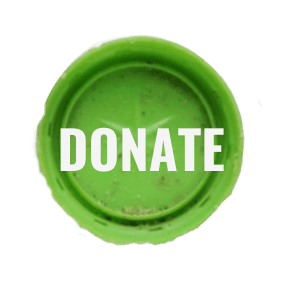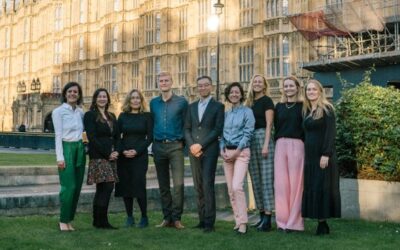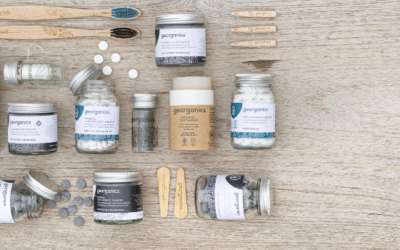Plastic pollution
THE GLOBAL THREAT FACING OUR OCEANS
WE NEED TO TURN THE TIDE
Plastic pollution has quickly become one of the biggest environmental challenges facing us today. We once thought of our deepest oceans, our highest mountains and our planetary poles as the final frontiers; unexplored, unknown, and in some places, unreachable. Research has shown this is no longer the case – we’re living in the age of plastic pollution, where even the Antarctic is floating in an invisible plastic soup. These are sad times for our big blue planet.
So how on earth did we get here and what do we need to do to turn off the tap? And how does the production of plastic connect with the other huge threat to our planet – the climate crisis? We’ve delved deep into some of the wider issues around plastic and brought back some plastic-free pearls for you to digest. Read on to discover what we’ve learned…
Why recycling doesn’t cut it
Bioplastics, not fantastic
Plastic and the climate crisis
Plastic in the ocean
The worst offenders
OCEANS OF PLASTIC
Globally we’ve already created over 8.3 billion metric tonnes of plastic. That’s a LOT. Think of the biggest animal in the world – the Blue Whale. A Blue Whale grows up 173 tonnes. So, we’ve produced the same amount of plastic as roughly 50 million Blue Whales. Let that sink in for a second … Now add to that the fact that plastic production is expected to double over the next 20 years, and nearly quadruple by 2050.
And up to 12 million tonnes of plastic is entering our oceans every year – that’s a whole rubbish truck full every minute. But where does it come from and how do we stop it ending up there?
Well, around 80% of the plastic in our oceans come from land-based sources – that’s the plastic we use every day that ends up in our waste stream or microplastics from things like car tyres and even carpets. The rest is created as a result of the fishing industry where nets get caught, lost or even thrown overboard. Ghost nets and fishing gear are a MASSIVE issue which are directly linked to our love for eating seafood.
It’s time to turn off the tap. And that’s where we (and you) come in!
NO EXCUSE FOR SINGLE-USE
Lightweight, cheap to produce and virtually indestructible, plastic has been seen as a miracle material across countless industries. The big problem though, and the one we’re tackling, is single-use plastic. The stuff you use once and throw away – the stuff we’ve only recently become addicted to, but which now covers our beaches, rivers and floods our oceans. It’s the everyday items we use at home, in the city – but that end up in the sea.
Single-use plastics are reported to make up around half of all global plastic production and in 2018 ‘single-use’ was crowned as word of the year by Collins Dictionary showing the level at which they’ve crept into our lives. Thanks to the tireless work of lots of NGOs, great media attention and programmes like Blue Planet with the legend that is David Attenborough, public awareness and concern have never been so high.
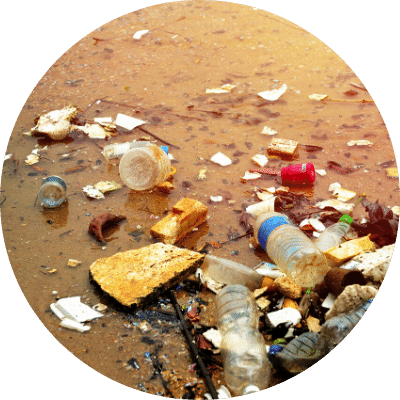
THE WORST OFFENDERS
So, when it comes to tackling single-use plastics where do I start?
Well, we thought it made sense to start with the ones that are ending up on our beaches, in our rivers and oceans to find a way to stop them from getting there in the first place. That’s how our first campaigns, Refill and #SwitchTheStick started life – after our founder kept finding plastic bottles and cotton bud sticks on beach cleans and came up with a cunning plan to stop them ending up there. It’s this beach and river clean data that shapes our campaigns and challenges us to come up with creative and practical ways of tackling these items.

A rising emergen-sea
We've launched our climate and ecological emergency declaration and also shared our new clarity of purpose. We’re telling the world that if you care about plastics, you need to care about climate change.
Recycling old myths
For decades now we’ve been told that it’s all fine – just use whatever you want and put it out in your recycling. It will disappear and get magically turned into something new. Unfortunately – as we’re all starting to realise – we can’t recycle our way out of our plastic pollution nightmare. One study found that only 9% of all plastic produced has ever been recycled. That means a MASSIVE 91%, of all the plastic, ever made is now in landfill, has been incinerated, or made its way into the natural environment.
At the moment, the UK’s official plastic recycling rate is just 45% and the EU’s 2020 recycling target is just 50%. Pretty low right? We can definitely do better. It’s time we bust the old recycling myths and get talking about how to reduce plastic pollution at source.
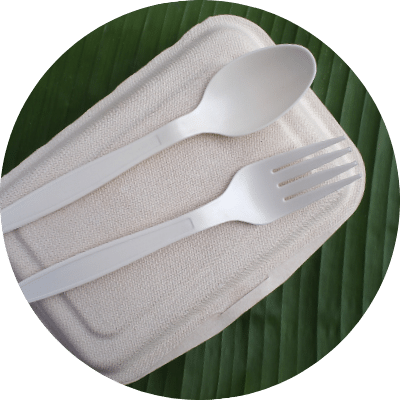
Are Bioplastics the answer?
Compostable bioplastics are another invention that has been touted as the solution to our single-use, throw-away lifestyle – allowing us to enjoy our takeaway coffees guilt-free. Turns out, it’s more than likely they’re a load of rubbish.
Most bioplastics can’t be put in your home composted; they can’t be put in your plastic recycling boxes and they don’t break down in the natural environment. This means they might actually be contributing to – not helping – the plastic pollution crisis we’re facing.

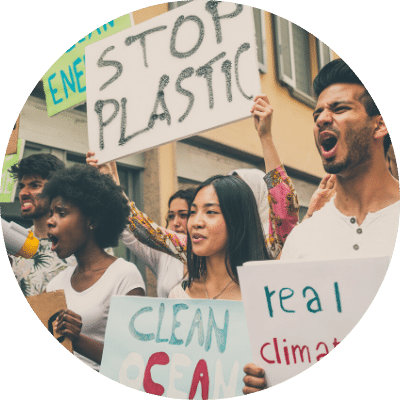
SYSTEM CHANGE NOT CLIMATE CHANGE
Ocean plastic pollution isn’t the only problem with plastics – they’re also a major contributor to the climate crisis. It’s thought that 4–8% of the world’s oil production is used to make plastics. and experts reckon that plastic production will account for 15% of global greenhouse gas emissions by 2050 if consumption trends continue.
The emissions from the plastics industry are also having a devastating impact on our oceans. According to the UN, climate change is heating the oceans and altering their chemistry so dramatically that it’s threatening the very existence of coral reefs, fuelling cyclones and floods and posing profound risks to the hundreds of millions of people living along the coasts.
It’s time to bring this trend to an end, friend.

THE IMPACT ON MARINE LIFE
From plankton to pilot whales, algae to albatross – no ocean life remains free from the effects of this plastic waste. It’s estimated that 100,000 marine mammals and turtles and 1 million sea birds are killed by plastic pollution annually.
Want to know more about how plastics end up in our oceans and what happens when it gets there? You’ve come to the right place!

GET THE LATEST FROM OUR BLOG
Chew Plants Not Plastic
Chew Plants Not PlasticA Call to Ban Plastic-Based Chewing GumDid you know most chewing gum contains plastic? Yes, that piece of gum in your mouth is actually made from the same plastics found in carrier bags, shampoo bottles, and even car tyres. And we brits chew a...
Taking the Reuse Manifesto to Parliament
Taking the Reuse manifesto to parliamentWhat is the City to Sea team doing at Westminster…again? City to Sea, CEO Jane Martin explains how we took our Reuse Manifesto to the Houses of Paliament.One of the great things about stepping up as CEO of mighty campaigning...
Making Waves Against Plastic Pollution with Georganics this Green Friday
Making waves against plastic pollution with Georganics this Green FridayMeet our partners leading the transition from single-use to reuse - The plastic problemPlastic pollution is one of today’s biggest environmental challenges, with more single-use plastic being...

